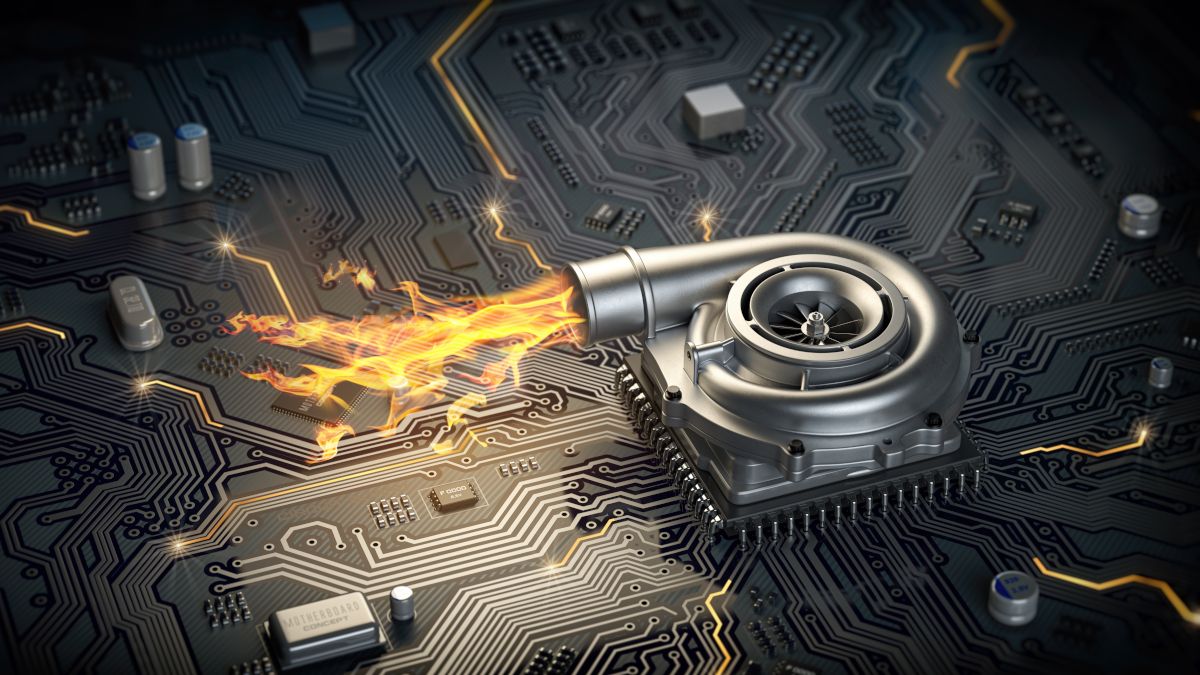Overclocking is a technique used by computer enthusiasts to push their hardware beyond its factory settings to achieve enhanced performance. This detailed guide explores what overclocking is, its benefits, potential risks, and a comprehensive step-by-step process to safely overclock your CPU, GPU, and RAM.
What is Overclocking?
Overclocking involves increasing the clock speed of your CPU, GPU, or RAM to make them run faster than their default specifications. This is achieved by adjusting settings in the BIOS/UEFI or using software tools designed for overclocking. The clock speed, measured in gigahertz (GHz), dictates how many cycles per second the processor can complete. By raising this speed, you can potentially improve system performance and responsiveness.
Benefits of Overclocking
Enhanced Performance:
- Gaming: Overclocking can lead to higher frame rates and smoother gameplay. Games that are CPU or GPU-intensive may particularly benefit from these performance gains.
- Productivity: Tasks like video editing, 3D rendering, and software development can see performance improvements, leading to faster render times and more efficient workflows.
Cost Efficiency:
- Delayed Upgrades: By overclocking, you might be able to extract more performance from your current hardware, which can postpone the need for costly upgrades.
- Maximized Investment: If you’ve invested in high-end components, overclocking can ensure you’re getting the maximum performance out of them.
Customization and Flexibility:
- Tailored Performance: Overclocking allows you to fine-tune your system to match your specific needs, whether for gaming, productivity, or general use.
- Benchmarking and Tuning: Enthusiasts can engage in benchmarking to achieve the optimal balance between performance and stability.
Risks and Considerations
Heat Management:
- Increased Thermal Output: Overclocking generates more heat. Effective cooling solutions, such as high-quality air coolers or liquid cooling systems, are crucial to prevent overheating.
- Thermal Paste: Consider applying high-performance thermal paste to improve heat transfer between your CPU and cooler.
System Stability:
- Potential Crashes: Overclocking can cause system instability. Issues such as random crashes or blue screens may occur if the settings are pushed too far.
- Data Integrity: Extreme overclocking can potentially lead to data corruption. Regular backups are advisable to protect important files.
Warranty and Longevity:
- Warranty Void: Many manufacturers void warranties if overclocking is detected. Check your hardware warranty terms before proceeding.
- Component Wear: Running components at higher speeds can potentially reduce their lifespan. Monitoring and maintaining reasonable overclocking levels can mitigate this risk.
How to Overclock: A Detailed Guide
1. Preparation and Research:
- Hardware Compatibility: Ensure your CPU, GPU, and RAM are capable of overclocking. Research your specific components and their limits.
- Cooling Solutions: Invest in high-performance cooling solutions to manage the increased heat. For CPUs, aftermarket coolers or liquid cooling systems are recommended.
2. Access BIOS/UEFI Settings:
- Enter BIOS/UEFI: Restart your computer and enter the BIOS/UEFI by pressing keys like F2, DEL, or ESC during startup.
- Locate Overclocking Options: Find the settings related to CPU multiplier, base clock (BCLK), and voltage adjustments. These are usually found in the “Advanced” or “Overclocking” sections.
3. Adjusting Clock Speeds:
- Incremental Changes: Start by increasing the CPU multiplier or BCLK in small increments (e.g., 100 MHz). Avoid making large changes to prevent system instability.
- Apply Changes: Save and exit the BIOS/UEFI, then boot into your operating system.
4. Stability Testing
:- Stress Testing: Use stress-testing tools such as Prime95, AIDA64, or Cinebench to evaluate system stability and performance. Monitor for crashes or errors.
- Temperature Monitoring: Use monitoring software like HWMonitor or Core Temp to keep track of system temperatures during stress tests.
5. Fine-Tuning:
- Adjust Voltages: If necessary, slightly increase the CPU or RAM voltage to stabilize higher clock speeds. Be cautious, as higher voltages increase heat output.
- Iterative Testing: Continue adjusting and testing in small steps to find the optimal settings. Ensure stability and adequate cooling before proceeding.
6. Long-Term Monitoring:
- Regular Checks: Regularly monitor system performance and temperatures to ensure continued stability. Adjust settings as needed based on usage patterns and environmental conditions.
Conclusion
Overclocking can provide significant performance boosts and extend the life of your hardware, making it a valuable technique for enthusiasts and gamers. However, it requires careful consideration of the associated risks, including heat management, system stability, and potential impacts on warranty. By following a methodical approach and prioritizing safety, you can unlock the full potential of your hardware and enjoy enhanced computing performance.
Whether you’re seeking to improve your gaming experience or boost productivity, mastering overclocking can be a rewarding endeavor. Remember to stay informed, proceed with caution, and always prioritize system stability and cooling.

